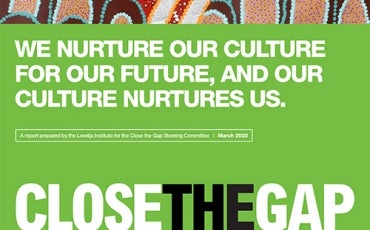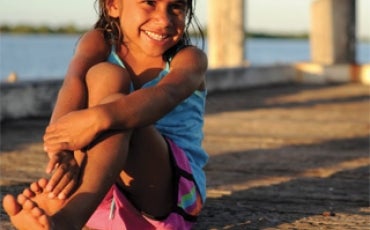Close the Gap - Progress & Priorities report 2017

Executive Summary
After 10 years, and despite closing the gap being a national bipartisan priority, it is clear that Australian governments at all levels are, in key respects, failing Australia’s First Peoples.
In February 2016, the Close the Gap Campaign (the Campaign) welcomed the Prime Minister’s words at his first Closing the Gap report to Parliament where he said ‘we have to stay the course on key policy priorities’ and that it is time for governments to ‘do things with Aboriginal people, not do things to’ Aboriginal people. In his speech, the Prime Minister said:
I will honour that commitment not by delivering to Indigenous Australians, but by working with Aboriginal and Torres Strait Islander leaders and their communities across Australia...[1]
And yet, as shown by the recent report of the Australian National Audit Office regarding the Indigenous Advancement Strategy,[2] across nearly every government funded program, initiative or portfolio responsibility we see the continuation of imposed, unengaged and often rushed service delivery.
Long-standing Close the Gap Campaign leader and CEO of The Lowitja Institute, Mr Romlie Mokak said at the 2016 Medicine & Society Oration that:
Power in the policy world sits with others, not with Aboriginal and Torres Strait Islander peoples. It resides outside of the domain of Aboriginal and Torres Strait Islander people. We must redress the power imbalance.[3]
In his Medicine and Society Oration, Romlie Mokak went on to say that ...
we are outsiders to the intimate internal discussions about our very own health and wellbeing.[4]
This must change in 2017.
Consider for a moment the 2.5 million episodes of care delivered to our people by Aboriginal Community Controlled Heath Organisations each year.
This community-controlled work is echoed by many of our organisations here today, and amplified by countless individual and community efforts working for change.
Imagine this work stretching out over decades as it has.
We need a new relationship that respects and harnesses this expertise, and recognises our right to be involved in decisions being made about us.
A new relationship where we have a seat at the table when policies are developed.
Dr Jackie Huggins
Redfern Statement Parliamentary Event, 14 February 2017
The launch of the Redfern Statement during the Federal Election in June 2016 was a watershed moment for Aboriginal and Torres Strait Islander peak organisations from health, justice, violence prevention, disability, children and families’ sectors, coming together to demand a new and better relationship with Government.
This should be a wake up call to Government that things need to be done differently. Indeed in the Prime Minister’s 2017 Closing the Gap Report, six of the seven closing the gap targets were not on track.[5]
The Campaign was especially concerned that the target to halve the gap in child mortality by 2018 is not on track and that Aboriginal and Torres Strait Islander child mortality did not improve significantly over the period 2008-2015. This is not good enough from governments that have committed to close the life expectancy gap by 2030 as a national priority.
While the Campaign has been generally pleased with the statements of ongoing bi-partisan support from across the Federal Parliament supporting closing the gap, words are not enough. The recognised necessity and urgency to closing the gap must be backed by action based on meaningful engagement with Aboriginal and Torres Strait Islander people.
Government must place Aboriginal and Torres Strait Islander affairs at the heart of their agenda, recognising health equality as a national priority.
Despite the regular upheaval of major policy changes, significant budget cuts, changing governments and the constant bureaucracy churn, we have still managed to see some encouraging improvements in Aboriginal and Torres Strait Islander health outcomes – although the 2017 Closing the Gap Report shows a mixed picture with insufficient progress in the key areas of health, education and employment.
Much remains to be done and, as we move into the next phase of the Closing the Gap framework, enhanced program and funding support will be required.
The necessary leadership of the Federal Government in closing the gap does not lessen the responsibility of the States and Territories to do all they can to bring about health equality for Aboriginal and Torres Strait Islander people. Roles and responsibilities of each level of government must be made clear and agreements forged through Council of Australian Governments (COAG) to renew national partnership arrangements between the Commonwealth and State jurisdictions.
Of particular importance for all levels of government, is to develop a more comprehensive approach to Aboriginal and Torres Strait Islander health that encompasses the social and cultural determinants of health.
The Campaign believes that strong leadership at all levels of government in taking forward a social and cultural determinants approach to Closing the Gap is required. It is here that the Redfern Statement is so important, affirming that:
The health and wellbeing of Aboriginal and Torres Strait Islander peoples cannot be considered at the margins...
It is time that Aboriginal and Torres Strait Islander voices are heard and respected, and that the following plans for action in relation to meaningful engagement, health, justice, preventing violence, early childhood and disability, are acted upon as a matter of national priority and urgency.[6]
The Campaign is confident that in getting this right for Aboriginal and Torres Strait Islander peoples, the inherent strength of a holistic approach to health will benefit all Australians.
We are also confident that if Government delivers on the words of the Prime Minister to work with Aboriginal and Torres Strait Islander peoples to deliver the solutions to health inequality, progress towards the national priority of closing the health equality gap will occur.
Notes
[1] The Hon Malcolm Turnbull MP, Speech to Parliament on the 2016 Closing the Gap Report (Speech delivered at the House of Representatives, Canberra, 10 February 2016) <http://www.malcolmturnbull.com.au/media/speech-to-parliament-on-the-2016-closing-the-gap-report>.
[2] Australian National Audit Office, Indigenous Advancement Strategy (2017) Commonwealth of Australia. At <https://www.anao.gov.au/work/performance-audit/indigenous-advancement-strategy>.
[3] Romlie Mokak, ‘A Question of Value: Aboriginal and Torres Strait Islander Health’ (Speech delivered at the 2016 Cranlana Programme Medicine & Society Oration, Melbourne, 10 August 2016).
[4] Romlie Mokak, ‘A Question of Value: Aboriginal and Torres Strait Islander Health’ (Speech delivered at the 2016 Cranlana Programme Medicine & Society Oration, Melbourne, 10 August 2016).
[5] Closing the Gap Prime Minister’s Report 2017 <https://www.niaa.gov.au/>.
[6] Redfern Statement Alliance, The Redfern Statement (9 June 2016) National Congress of Australia’s First Peoples. At <https://humanrights.gov.au/our-work/commission-general/broken-link>.



